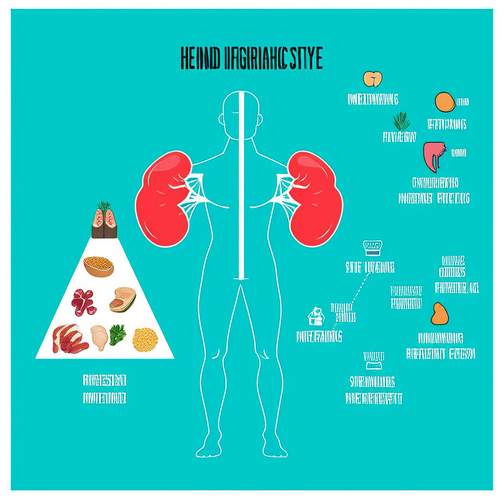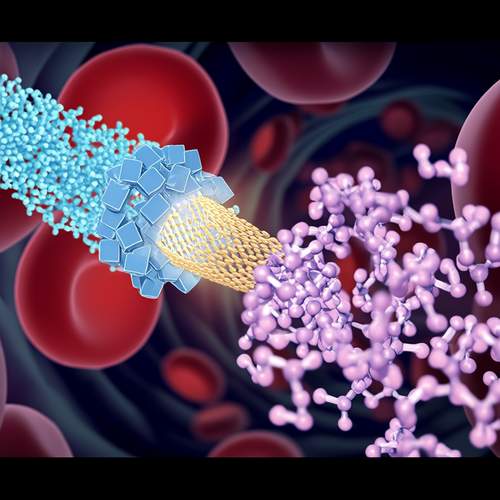For decades, researchers have been investigating the complex relationship between micronutrients and metabolic health. Among these essential trace minerals, chromium has emerged as a particularly fascinating element due to its potential role in blood sugar regulation. This silvery-blue transition metal, found naturally in various foods and supplements, appears to influence how our bodies process carbohydrates and maintain glucose homeostasis.
The connection between chromium and blood sugar first gained scientific attention in the late 1950s when researchers identified what they called the "glucose tolerance factor" (GTF). This biologically active form of chromium was found to enhance insulin sensitivity in animal studies. Since then, hundreds of studies have explored chromium's mechanisms and clinical applications, though some aspects remain scientifically controversial.
Understanding Chromium's Biological Role
Chromium exists in several oxidation states, but only trivalent chromium (Cr3+) appears to have biological significance. Within the body, chromium supports insulin signaling pathways by facilitating the interaction between insulin and its cellular receptors. This mineral doesn't replace insulin but rather optimizes its efficiency - like grease helping a key turn smoothly in a lock.
The pancreas naturally contains higher chromium concentrations than other organs, suggesting its importance in endocrine function. During carbohydrate metabolism, chromium appears to help shuttle glucose into cells by supporting insulin's action at the cellular level. This process becomes particularly crucial after meals when blood sugar levels rise.
Dietary Sources and Absorption Challenges
Chromium occurs naturally in various foods, though modern agricultural practices have reduced its presence in many crops. Good dietary sources include broccoli, barley, oats, green beans, tomatoes, romaine lettuce, black pepper, and brewer's yeast. Meat, especially organ meats like liver, also contains bioavailable chromium.
However, chromium absorption presents unique challenges. The body typically absorbs only 0.4% to 2.5% of dietary chromium, with vitamin C and certain amino acids potentially enhancing uptake. Conversely, diets high in simple sugars may increase chromium excretion through urine, creating a potential vicious cycle for those with blood sugar regulation issues.
Chromium Supplementation and Blood Sugar Control
The scientific community remains divided about chromium supplementation's universal benefits. Some meta-analyses show modest improvements in glycemic control among people with type 2 diabetes, particularly when using chromium picolinate - a form with relatively high bioavailability. These studies often report reduced fasting glucose levels and improved HbA1c values after several months of consistent supplementation.
Interestingly, chromium's effects appear more pronounced in individuals with existing metabolic dysfunction or deficiency. Those with adequate chromium status may experience minimal changes from additional intake. This highlights the importance of individual biochemical variability in nutritional interventions.
Potential Mechanisms of Action
Researchers have proposed several mechanisms to explain chromium's glucose-stabilizing effects. One prominent theory suggests chromium enhances insulin receptor kinase activity, essentially making cells more responsive to insulin's signals. Other studies indicate chromium may help maintain proper insulin receptor number and affinity on cell membranes.
At the molecular level, chromium might influence the expression of genes involved in glucose transport and metabolism. Some evidence suggests it activates AMP-activated protein kinase (AMPK), an enzyme that plays a central role in cellular energy homeostasis. These multifaceted actions could explain chromium's broad metabolic effects beyond just blood sugar regulation.
Clinical Considerations and Safety Profile
For most healthy individuals consuming balanced diets, chromium deficiency remains uncommon. However, certain populations face higher risk, including the elderly, frequent consumers of highly processed foods, and those with conditions causing increased urinary losses. Athletes may also have elevated chromium needs due to enhanced glucose metabolism during exercise.
The safety profile of trivalent chromium appears excellent, with the Food and Nutrition Board establishing a tolerable upper intake level of 1,000 mcg/day for adults. Unlike its toxic hexavalent form (Cr6+), trivalent chromium has low absorption and rapid excretion, making toxicity extremely rare at reasonable doses.
Emerging Research Directions
Recent studies have begun exploring chromium's potential role in other metabolic conditions beyond diabetes. Some preliminary research suggests possible benefits for polycystic ovary syndrome (PCOS), non-alcoholic fatty liver disease (NAFLD), and even certain aspects of cardiovascular health. However, these areas require more rigorous investigation before definitive conclusions can be drawn.
Another promising avenue involves personalized nutrition approaches using chromium. Genetic variations affecting chromium metabolism or insulin signaling pathways might help identify individuals who would benefit most from supplementation. This precision medicine approach could transform how we use nutritional interventions for metabolic health.
Practical Recommendations for Blood Sugar Support
For those considering chromium for blood sugar management, several practical considerations emerge. First, addressing overall dietary quality remains paramount - no supplement can compensate for poor nutritional habits. Incorporating chromium-rich whole foods while reducing refined carbohydrates creates a solid foundation.
When supplementation appears warranted, chromium picolinate or polynicotinate forms often show better absorption than chromium chloride. Typical doses range from 200-1,000 mcg daily, though individuals should consult healthcare providers to determine appropriate levels based on their health status and medications.
The Bigger Picture of Metabolic Health
While chromium's blood sugar-stabilizing potential warrants attention, it's crucial to view it as one piece of a complex metabolic puzzle. Optimal glucose regulation requires coordinated efforts including balanced nutrition, regular physical activity, stress management, and adequate sleep. Micronutrients like chromium work synergistically within this broader context.
Future research may clarify chromium's precise mechanisms and ideal applications. For now, maintaining adequate chromium status through diet or judicious supplementation appears reasonable for those concerned about blood sugar control, particularly when combined with other evidence-based lifestyle strategies.

By /May 21, 2025

By /May 21, 2025

By /May 21, 2025

By /May 21, 2025

By /May 21, 2025

By /May 21, 2025

By /May 21, 2025

By /May 21, 2025

By /May 21, 2025

By /May 21, 2025

By /May 21, 2025

By /May 21, 2025

By /May 21, 2025

By /May 21, 2025

By /May 21, 2025

By /May 21, 2025

By /May 21, 2025

By /May 21, 2025

By /May 21, 2025

By /May 21, 2025